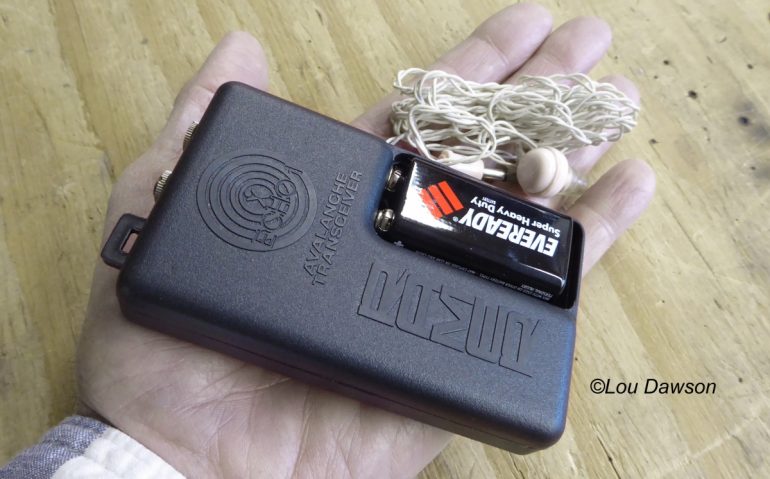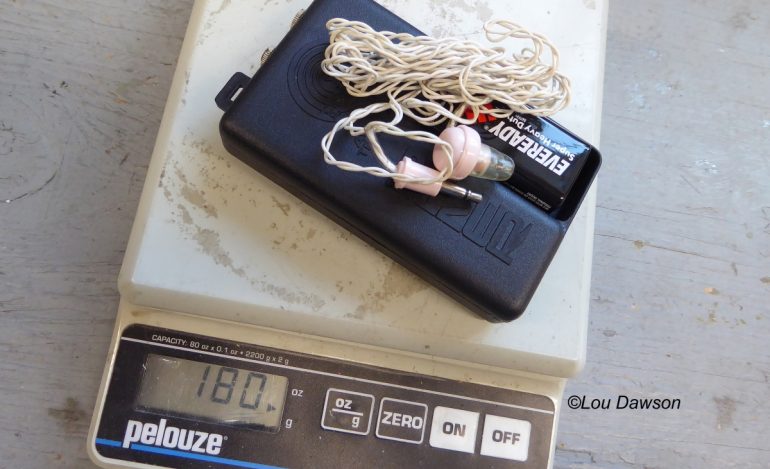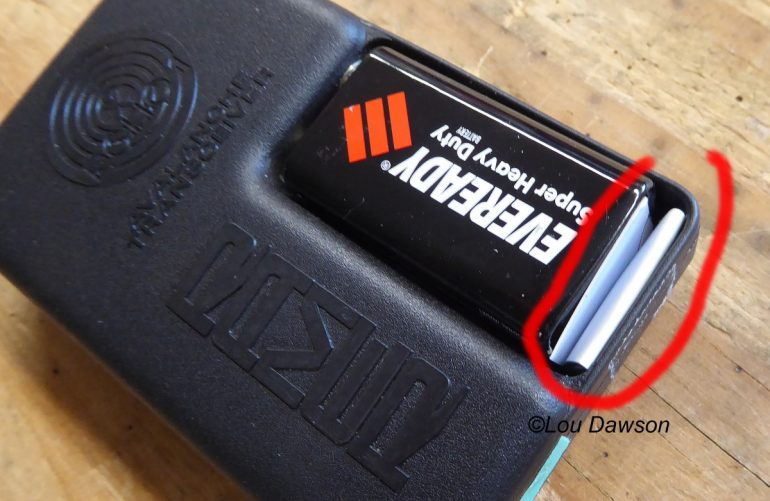A glimpse into avalanche transceiver evolution
Chum for you history buffs. Check out the simplest and in many ways the most elegant avalanche transceiver ever retailed.
The first effective electronic avalanche beacon was arguably the “hot dog” Skadi, which began retail sales around 1971. Soon after, a handful of beacon models were imported from Europe. Though all of them worked, they were pricey and over-designed. There was clearly a niche for something simple and effective, on a lower pricepoint.
In the 1980s and 90s, the late and most certainly great Paul Ramer, inventor of the Ramer ski touring binding (later reversed, miniaturized and refined by Fritz Barthel to become the tech binding), was in the business of providing innovative and effective gear. The result? the Echo 1, 2, and 3 model avalanche beacons. All the Echos were nearly identical in appearance (a small black box), with incremental improvements in battery life as development progressed. Because they were so basic, the three generations of Echos were all essentially the same (for the record, versions 1 and 2 were definitely retailed, but the availability history of #3 remains unclear). Myself and friends used them extensively.
Granted, the Echo required a skilled operator capable of analog gridding. But so did the other analog units of the time. Learning the search skills was not rocket science (though certainly not point-and-shoot). I tested nearly every brand model of beacons in those early days. In my opinion Echo worked as well as them all, sometimes better.
The world of beacons changed in 1984 when ICAR (International Commission for Alpine Rescue) strongly recommended the 457 KHZ signal frequency be adopted for all beacons (they adopted 457 several years later). Echo ran 2275 Hz. Ramer attempted to develop and market another beacon but it never happened, and the Echo faded into obscurity. Dual frequency beacons solved the two-frequency problem for a while, then the market stabilized at 457. In winter of 1997-98 Backcountry Access retailed the first digital dual-antenna rig, the Tracker, and we didn’t look back. Time to make up for that.
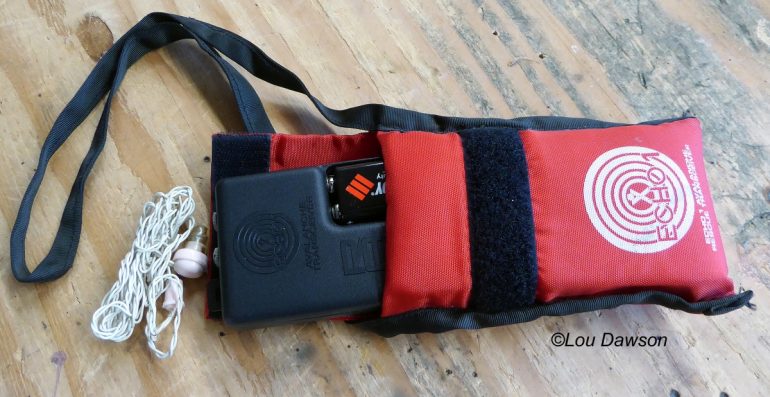
Echo came with a neck loop chest pouch, a model of simplicity. Full figured women I skied with told me they found this bulky rig unwieldy, and I have to say it did look a bit odd on bulging from anyone’s chest like they were sporting an externally mounted artificial heart. But it worked.
Ramer set benchmarks with the Echo, some equaled, some surpassed, some seemingly impossible. Battery life was rated at 1,500 hours. That’s not a typo. I’d test my Echo’s 9-volt battery by dabbing the terminals with my tongue (sharp buzz, ok) and change it once or twice a season though it seemed to never need it. Echo’s 180 gram mass remains exceptionally low in comparison to the present. For example a BCA Tracker 3, though one of the more compact and lighter units available, still comes in at 198 grams. Price? You could buy at a two-fer price of $69.00 each (about $161.00 in today’s currency).
My favorite thing? Turn off by inserting the earphone jack in an on-off socket. Yes Virginia, no arrows, no flashing lights, no computers. I had a hard time finding much wrong with the thing when it was my go-to, and still feel that way.
The only con I could come up with in those analog days was you could mistakenly insert the headphone jack into the receive-search connector while intending to turn the Echo off, and thus run down the battery. But hey–an easily preventable error. Some people broke the headphone cable, though that never happened to me and did not interfere with transmission, only rescue. Oh, and you had to stick a chunk of folded cardboard at the bottom of the battery, in case the steel-beam rigid skis of the era jiggled you so hard it came disconnected. In terms of present day standards, the range also had a bit to be desired. The farthest you could pick up a signal was sometimes 75 feet, often more like 50, requiring a tight zig-zag when doing rough search for all but the smallest slides (or the help of a few more searchers). A few photos below (thanks Matt Kamper for the museum donation).
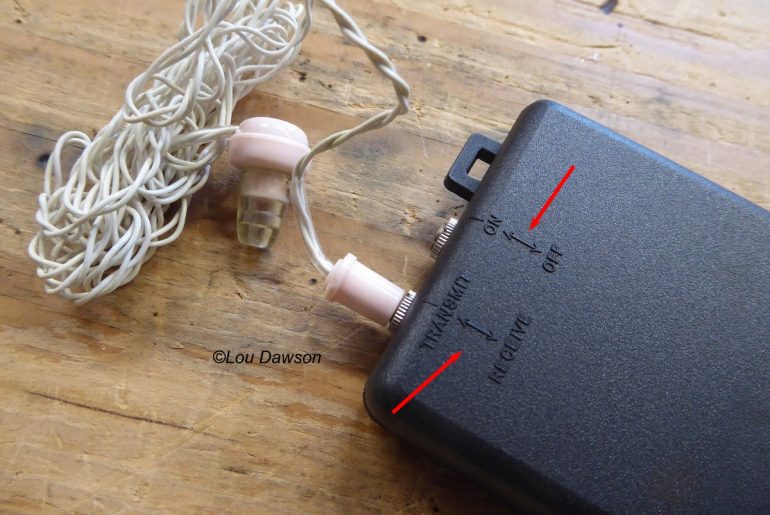
I love the on-of and switch to transmit methodology: Nothing connected, it’s transmitting. Jack in to the on-off connector, you are powered down. Jack in the “Receive” connector, find your friend. On a rescue, leave it plugged in to “Receive” and no chance of bumping or otherwise accidentally switching to transmit.
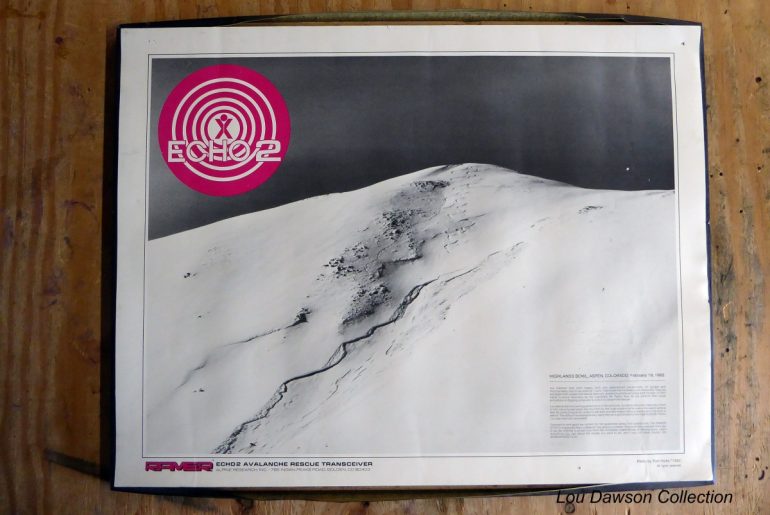
Bonus image. In 1983 I finally made it on to a skiing poster — or at least my tracks did. During the previous winter I’d made a colossal mistake and nearly killed myself in an avalanche. Ski patroller Tom Hicks shot this photo of the slide aftermath. Paul Ramer subsequently used the image for a poster touting the Echo Avalanche Transceiver. Ironically I was wearing an Echo at the time but was not fully buried, though severely injured. The Echo came through unscathed and I continued using it until clearly superior units became available.
WildSnow.com publisher emeritus and founder Lou (Louis Dawson) has a 50+ years career in climbing, backcountry skiing and ski mountaineering. He was the first person in history to ski down all 54 Colorado 14,000-foot peaks, has authored numerous books about about backcountry skiing, and has skied from the summit of Denali in Alaska, North America’s highest mountain.

